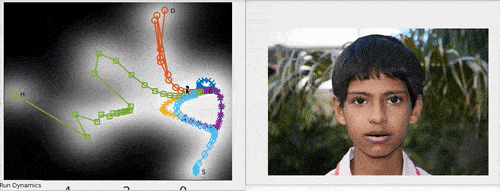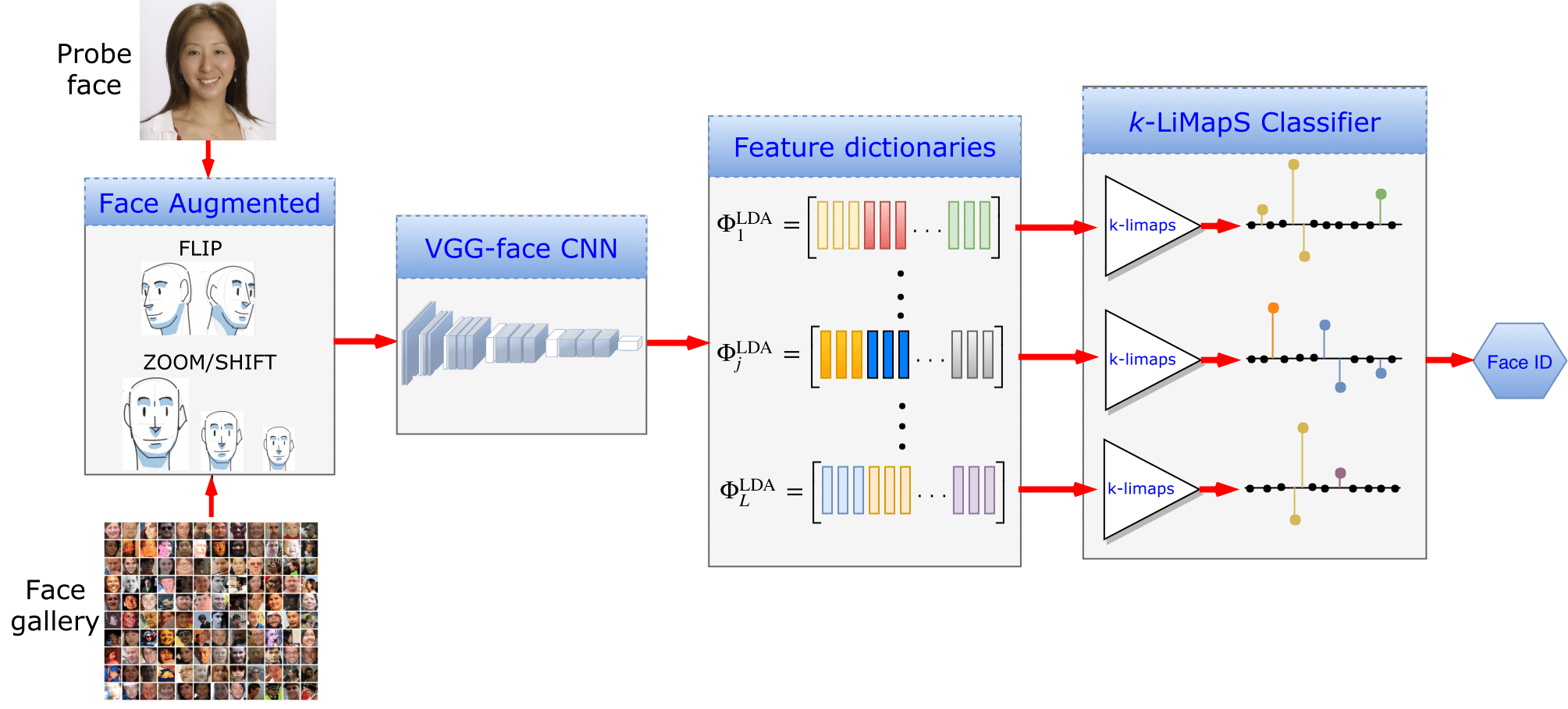

Description
The processing of facial cues is fundamental in social interactions. Probabilistic models have been adopted for modelling a somatic motor space representation of emotional facial expressions in the course of interaction [1]. Further, neuroscience give evidence of a fast and pre-attentive route to facial expression detection in order to trigger subsequent analyses; in this perspective, deep three dimensional neural networks have been exploited to experiment the setting of suitable priors to the dynamic core affect space (valence and arousal) [2].
Clearly, the processing of expressive cues is but one side of facial processing, the other being the processing of facial identities. To such end, new general sparse coding techniques for dictionary learning have been developed [3, 4] and sparse coding techniques are currently investigated for face recognition [8,17]. Also, advanced gpu-based approaches have been implemented for optimized video encoding [5, 6].
In particular we are currently concerned with the Single Sample Per Person (SSPP) [7] face recognition that is receiving a significant attention due to the challenges it opens especially when conceived for real applications in unconstrained environments. We propose a solution exploiting the effectiveness of deep convolutional neural networks (DCNN) feature characterization, the discriminative capability of linear discriminant analysis (LDA), and the efficacy of a sparsity based classifier
References
[1] Alessandro D’Amelio, Vittorio Cuculo, Giuliano Grossi, Raffaella Lanzarotti, and Jianyi Lin. A note on modelling a somatic motor space for affective facial expressions. In
International Conference on Image Analysis and Processing, pages 181–188. Springer, 2017.
[2] Claudio Ceruti, Vittorio Cuculo, Alessandro DAmelio, Giuliano Grossi, and Raffaella Lanzarotti. Taking the hidden route: Deep mapping of affect via 3d neural networks. In
International Conference on Image Analysis and Processing, pages 189–196. Springer, 2017.
[3] Alessandro Adamo, Giuliano Grossi, Raffaella Lanzarotti, and Jianyi Lin. Sparse decomposition by iterating lipschitzian-type mappings.
Theoretical Computer Science, 664:12–28, 2017.
[4] Giuliano Grossi, Raffaella Lanzarotti, and Jianyi Lin. Orthogonal procrustes analysis for dictionary learning in sparse linear representation.
PloS one, 12(1):e0169663, 2017.
[5] Pietro Paglierani, Giuliano Grossi, Federico Pedersini, and Alessandro Petrini. Gpu-based vp8 encoding: Performance in native and virtualized environments. In
Telecommunications and Multimedia (TEMU), 2016 International Conference on, pages 1–5. IEEE, 2016.
[6] P Comi, P Secondo Crosta, M Beccari, Pietro Paglierani, Giuliano Grossi, Federico Pedersini, and Alessandro Petrini. Hardware-accelerated high-resolution video coding in virtual network functions. In
Networks and Communications (EuCNC), 2016 European Conference on, pages 32–36. IEEE, 2016.
[7] Bodini, Matteo, et al. "Single Sample Face Recognition by Sparse Recovery of Deep-Learned LDA Features."
International Conference on Advanced Concepts for Intelligent Vision Systems. Springer, Cham, 2018.

